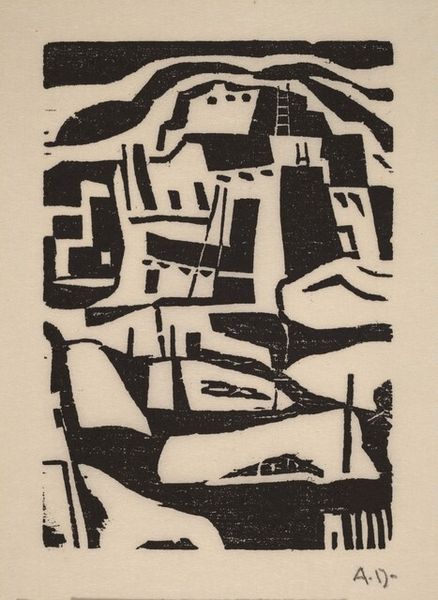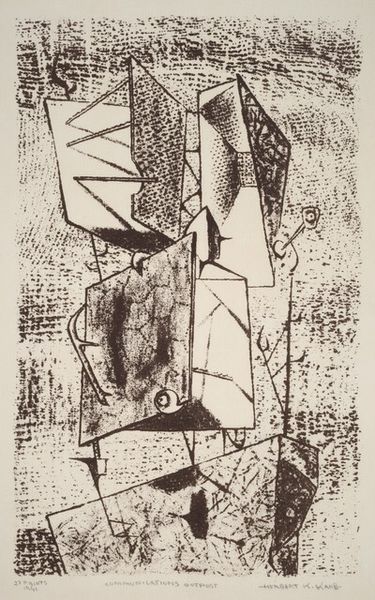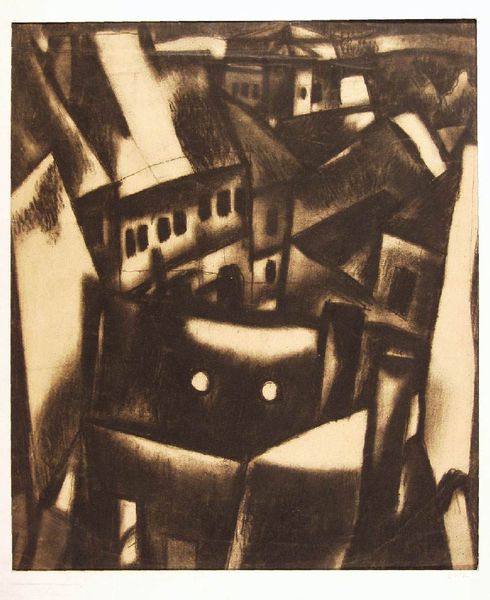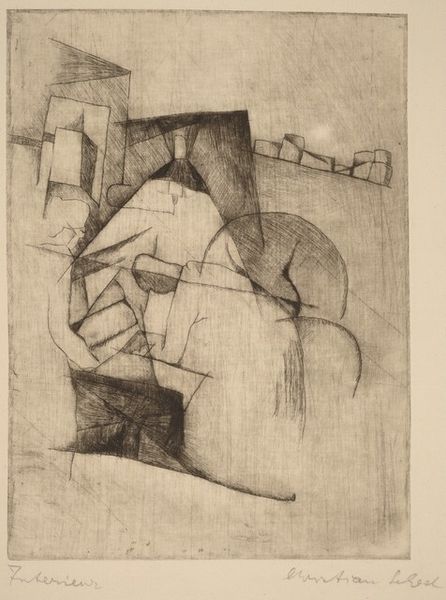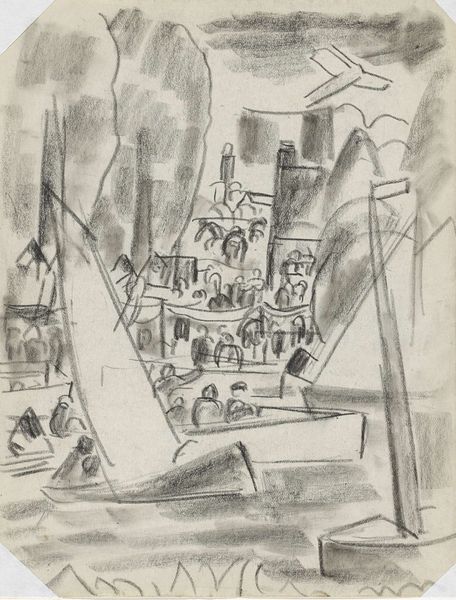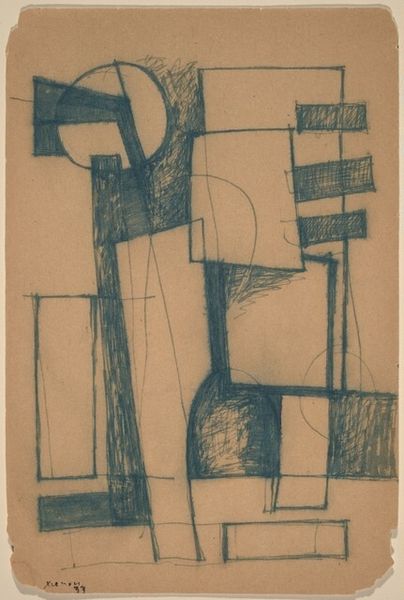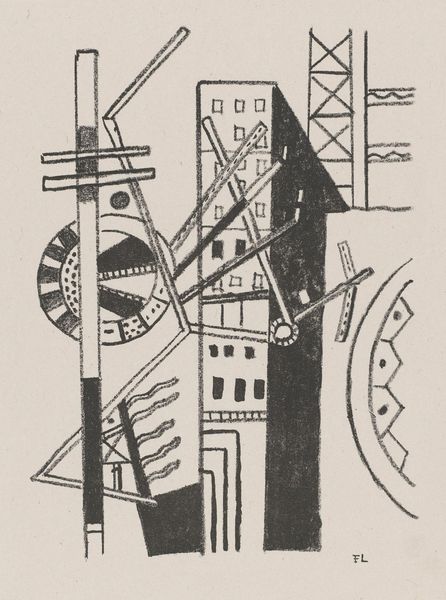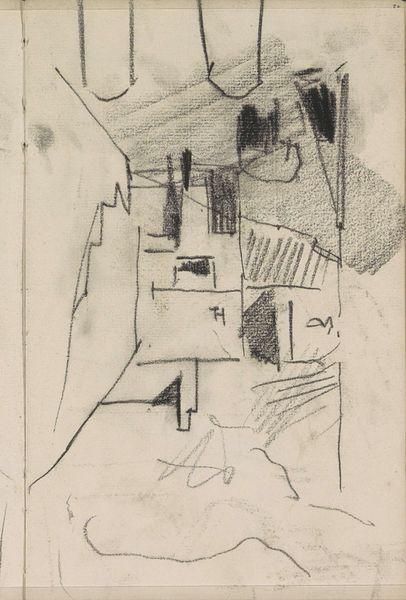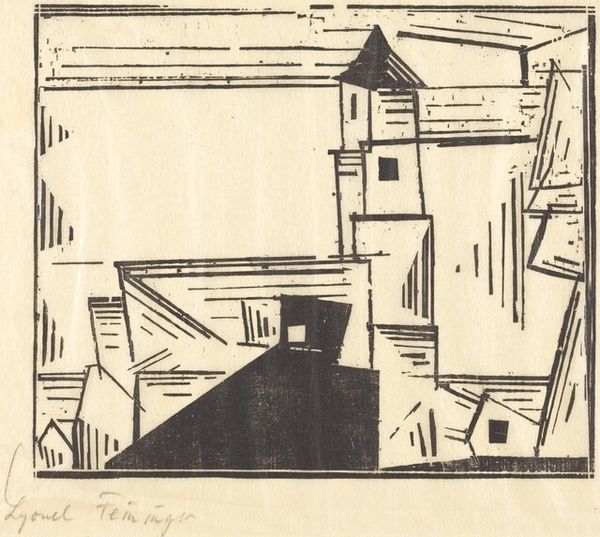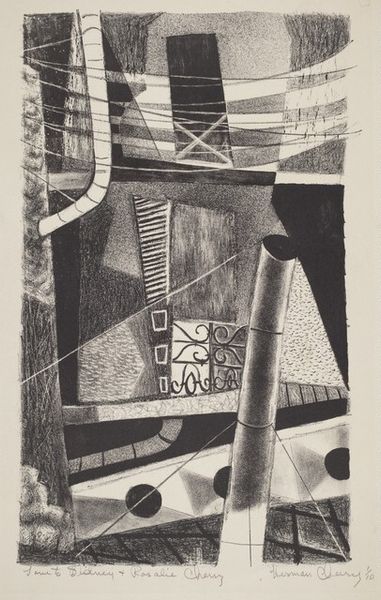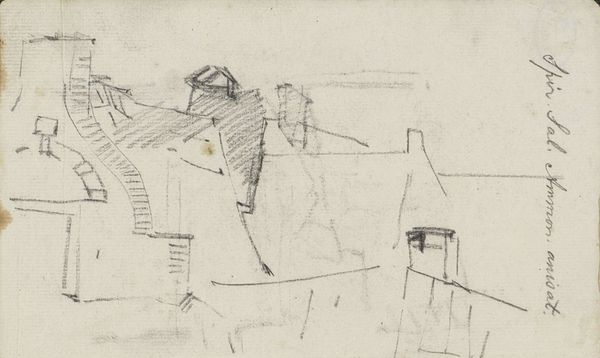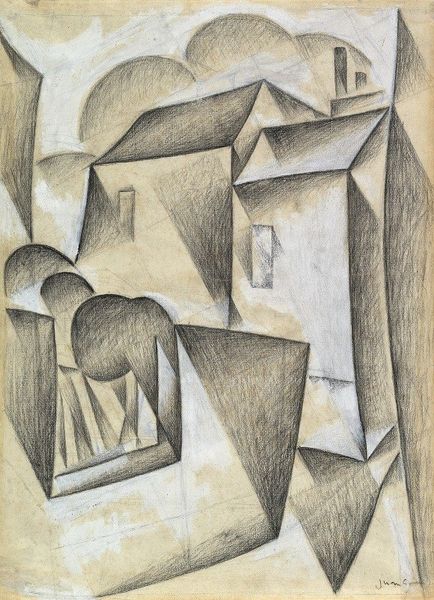
print, ink
# print
#
ink
#
geometric
#
abstraction
#
cityscape
Copyright: National Gallery of Art: CC0 1.0
Editor: This is Frederick J. Whiteman's "City Aquarium," an ink print from 1936. It's quite abstract, almost a jumble of geometric shapes, but I can make out suggestions of buildings. How do you read this piece? Curator: From a materialist perspective, it’s fascinating to consider this print within the context of the 1930s. The etching process itself, using acid to carve lines into a metal plate, then forcing ink into those lines, speaks to industry and repetitive labor. This was a time when artistic production, even outside factories, reflected the anxieties and energies of mass production and societal shifts. Editor: So, the medium itself relates to industrial themes? I hadn’t considered that. Curator: Precisely. And note the scarcity of material. An etching, made using affordable metal and ink, could produce multiple copies, suggesting a move toward art accessible to a wider audience, breaking down the traditional barriers of high art which would involve higher valued materials. Also consider the artist's choice of rendering the urban environment with hard, mechanical lines. It's not a romantic depiction, is it? What do you think Whiteman intended to say about city life at this time? Editor: Maybe it's about the coldness or dehumanizing effect of city architecture. It's certainly not the peaceful aquarium I was imagining. Curator: Exactly! Look closer at the dense, tangled network of lines representing the architecture. Could it suggest the complicated and often chaotic systems within the urban fabric? How materials and making tell a story! Editor: This reframes the work. I was caught up in the visual chaos but considering the context and medium together opens up a much deeper understanding of it. Curator: Agreed, looking at the tangible means through which it’s made always enriches our view.
Comments
No comments
Be the first to comment and join the conversation on the ultimate creative platform.
